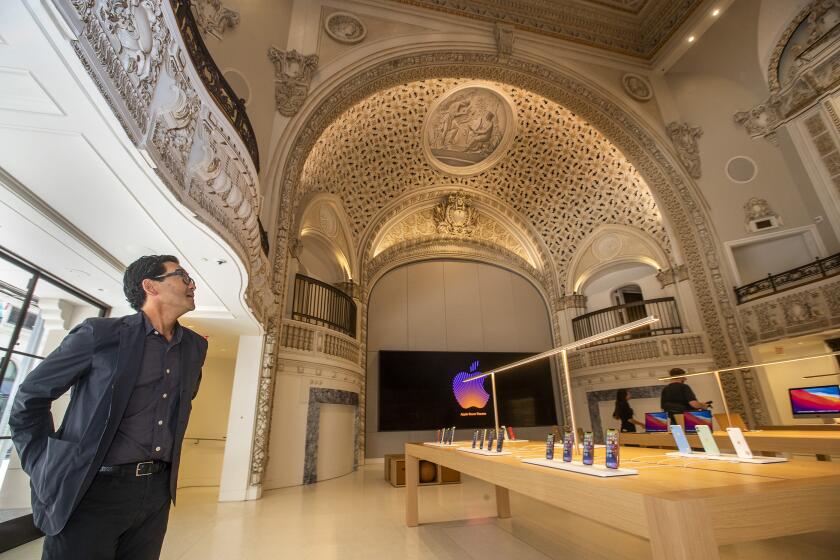Historic Herald Examiner Building reopens as a downtown L.A. neighborhood revives
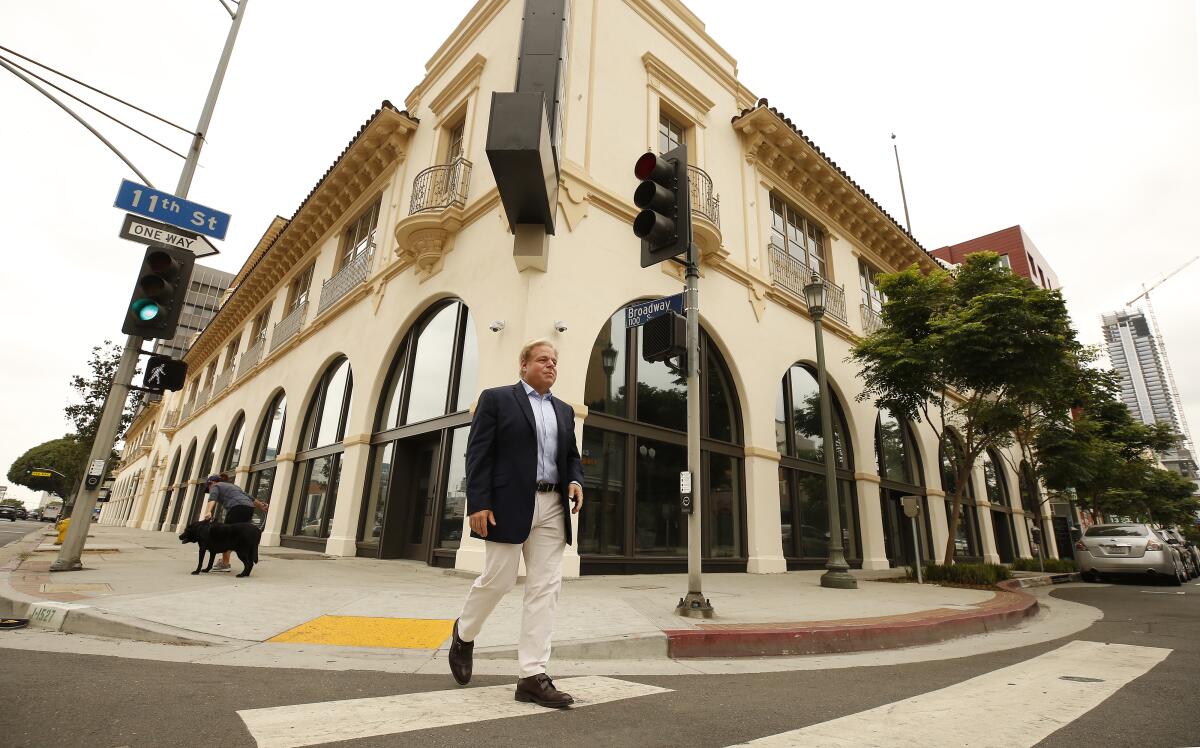
- Share via
The landmark building that publishing titan William Randolph Hearst built for his Los Angeles newspaper over a century ago has been restored to public life as surging development in its downtown neighborhood brings new apartments, hotels and offices.
Completed in 1914 on South Broadway, the Herald Examiner Building was the first collaboration between Hearst and architect Julia Morgan, who went on to design his palatial Hearst Castle estate in San Simeon. The newspaper folded in 1989, and the property became a popular filming location for cop shows, sitcoms and movies.
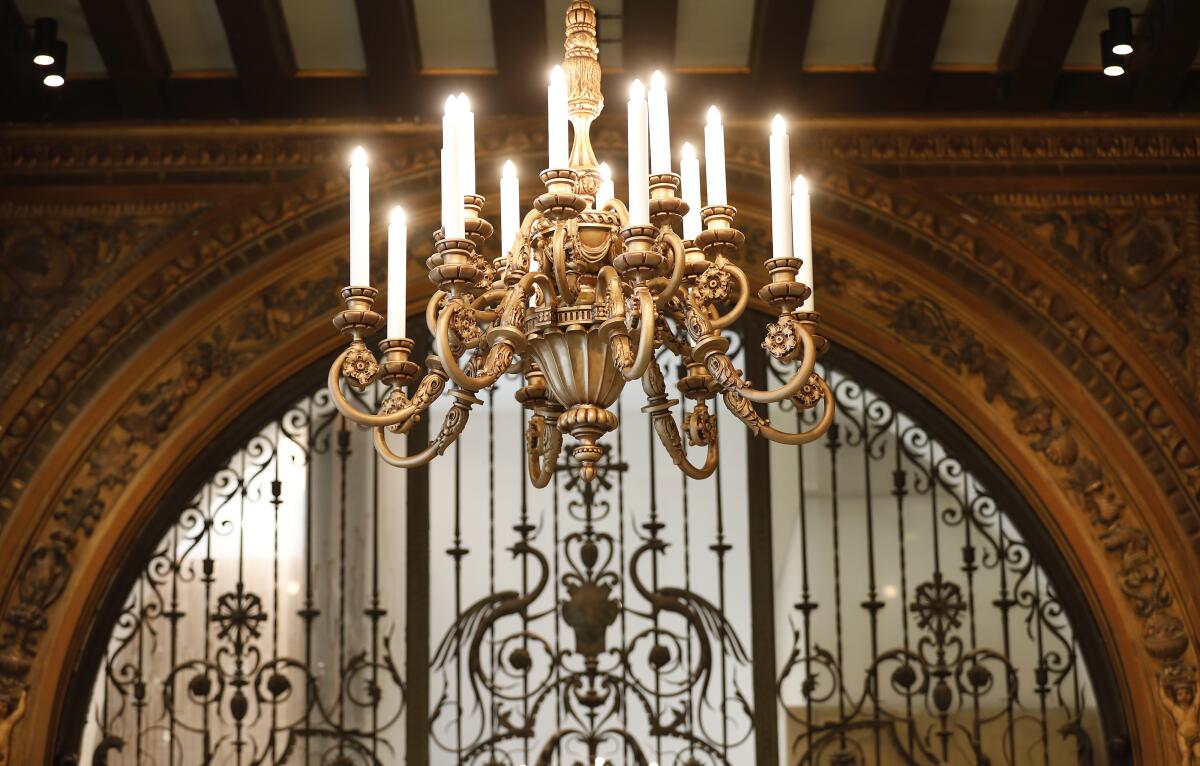
New York developer Georgetown Co. purchased a stake in the architectural gem from Hearst Corp. in 2015 and partnered with the newspaper chain on an $80-million project to redevelop the building into offices for rent and ground-floor restaurants, said Michael Fischer, a senior vice president at Georgetown who oversaw the project.
Arizona State University moved in last month as the office tenant and now has room to educate as many as 500 students a day, said Maria Anguiano, senior vice president of enterprise strategies. The Tempe, Ariz.-based school is one of the largest in the country with 134,500 students taking classes in person and online.
With the latest store, opening Thursday, Apple showcases its creative muscle. Others see it as a harbinger of downtown’s reawakening after COVID.
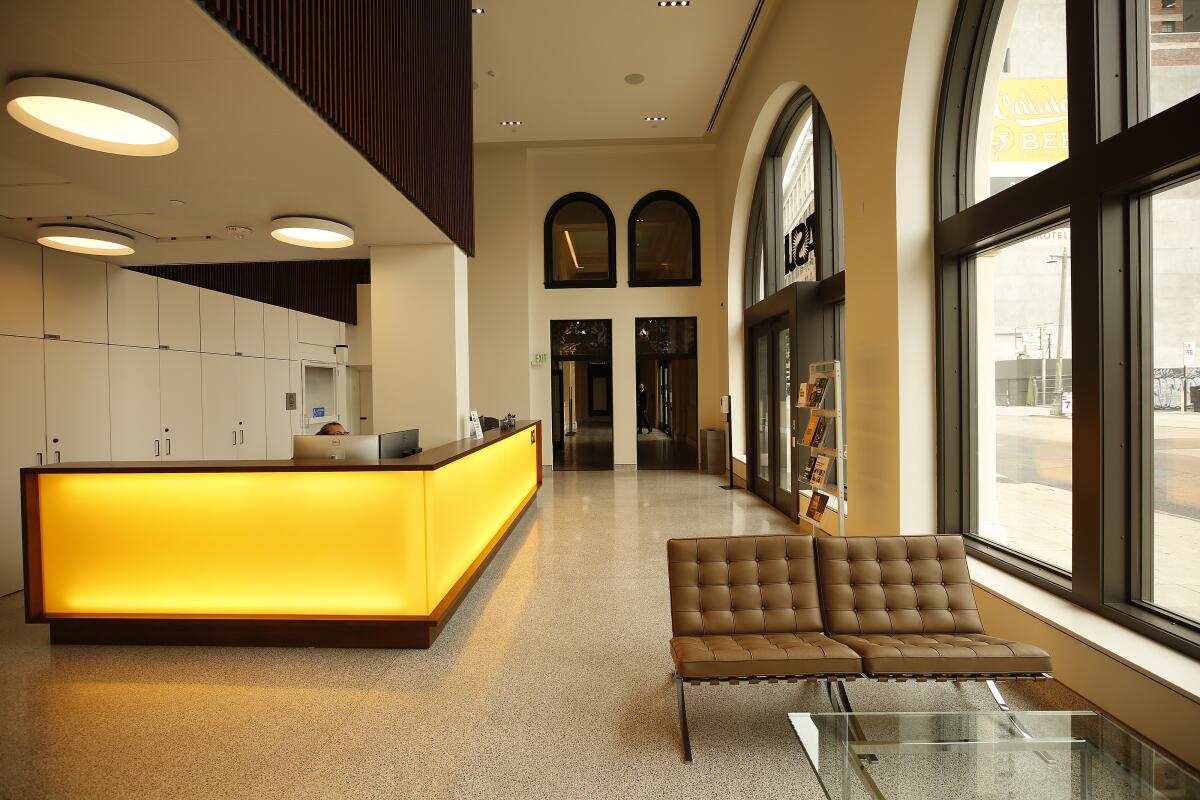
Among those studying in the former newspaper building are students in the Walter Cronkite School of Journalism and Mass Communication, Sidney Poitier New American Film School and Thunderbird School of Global Management.
ASU has had satellite offices for the last several years in Santa Monica, where it runs a filmmaking program called Film Spark, but it needed a bigger footprint in the region, she said. Some students will come from Arizona for a semester to attend a specific program whereas others will study for their degrees entirely in Los Angeles.
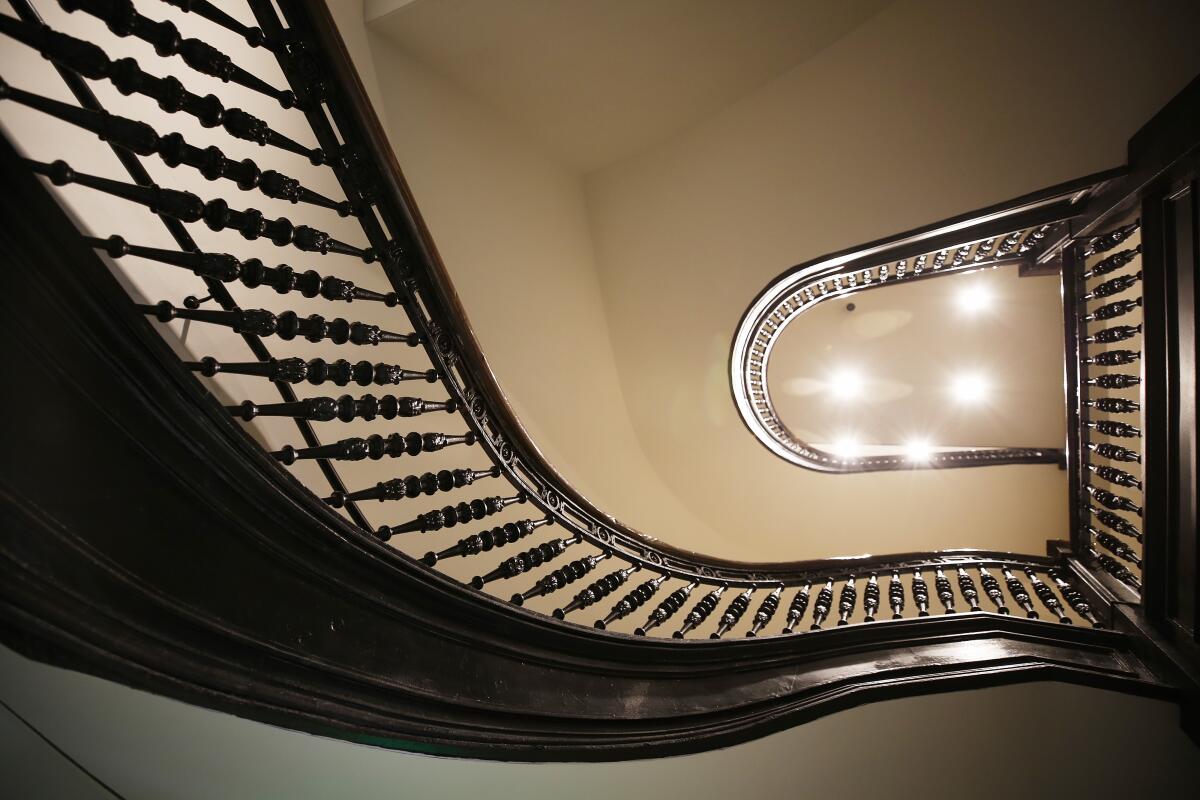
About 90% of ASU undergraduate students in Los Angeles are people of color, Anguiano said, and 75% are the first in their families to attend college. “Our mission of inclusion leads us to wherever the needs are,” she said.
The facilities are light, modern and quiet, a leap from the Herald Examiner days remembered by family scion Steve Hearst when the building roared with ringing phones, the pounding of manual Underwood typewriters and the shouted communications it took to publish seven editions of the paper a day.
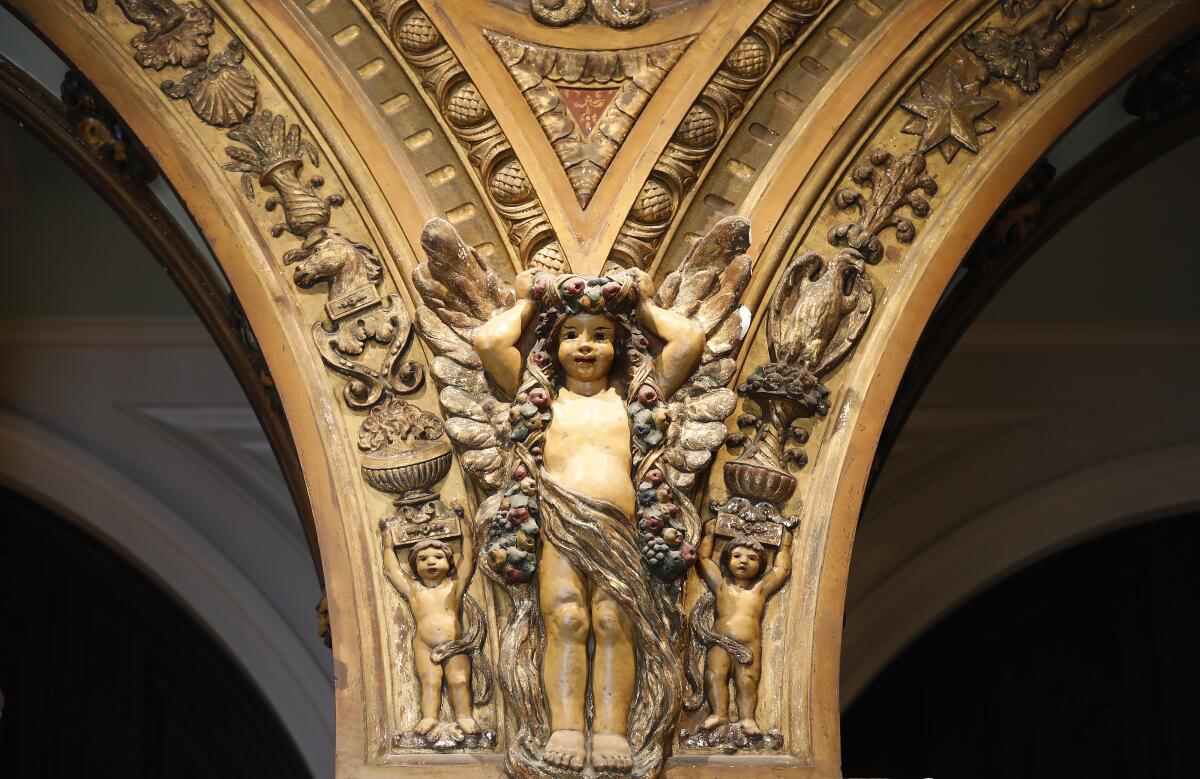
“It was a noisy place,” Hearst recalled of his days visiting as a child and later as an employee in the 1970s and 1980s.
His father, George Hearst, was William Randolph’s grandson and publisher of the Herald Examiner during a rancorous labor strike that started in 1967 and dragged on for a decade as Hearst tried to break the unions. Early in the conflict a pro-union demonstration outside grew rowdy and bricks and Molotov cocktails were hurled through ground-floor windows, Steve Hearst said.
A cold storage plant in Los Angeles’ Arts District would be replaced with housing, offices, a hotel and shops in a proposed mega-development called Fourth & Central.
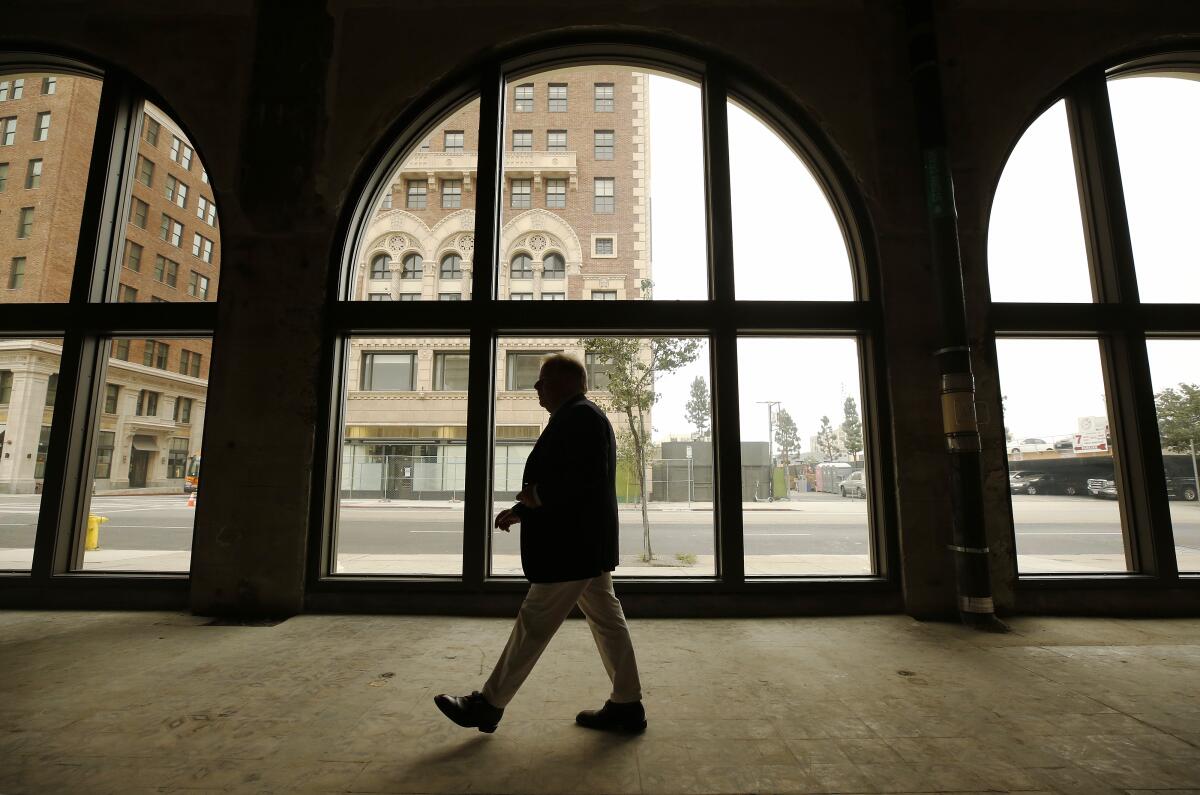
His father had the arched windows sealed with concrete, which remained in place until Georgetown restored the windows to bring light to the restaurants and a shop the developer plans to put in place next year. The owners of Hancock Park fine dining establishment République once agreed to open a bistro in the building but no longer plan to come.
Another Morgan-designed feature restored to functionality is a wide expanse of saw-toothed skylights that were mostly blacked out during World War II in the hope of making Los Angeles less visible to potential enemy bombers.
The level of the building once used by the editorial and promotions departments is now filled with sunlight. Elsewhere in the building, the original location for printing presses has been converted to an event space for 200 people as part of the makeover designed by architecture firm Gensler.
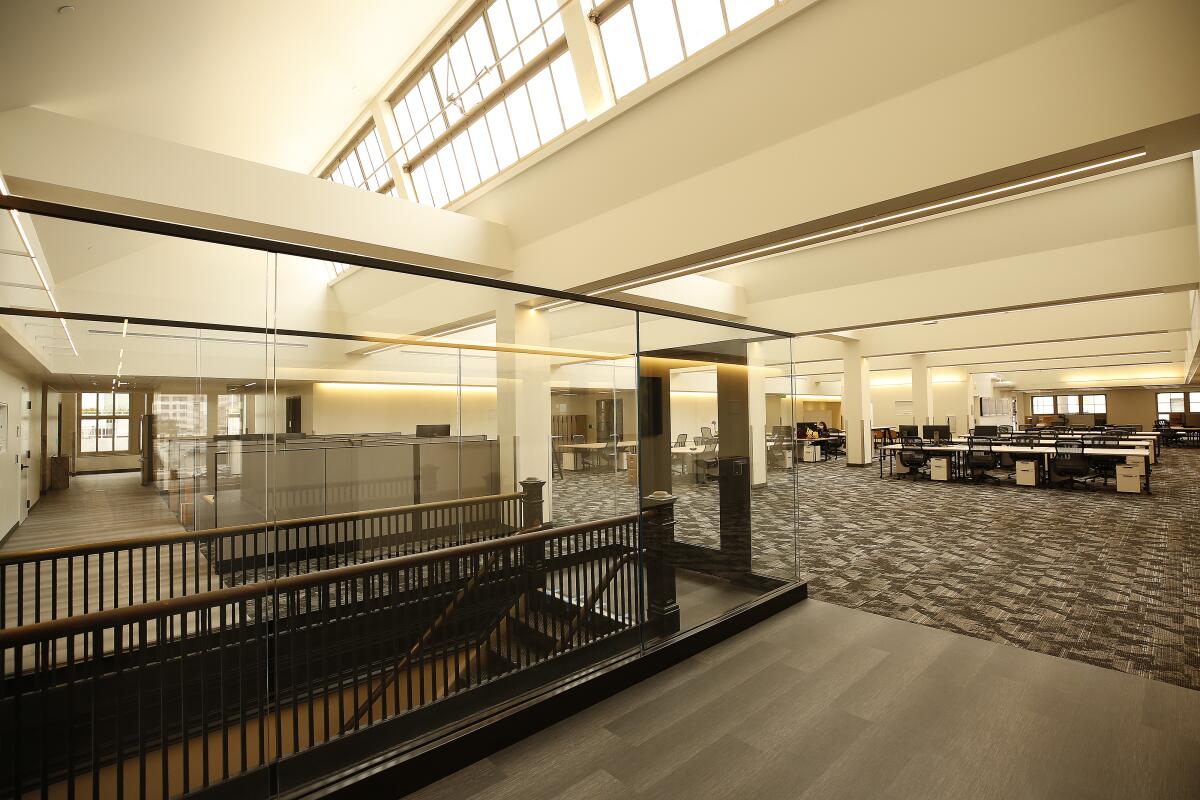
Georgetown also came across tunnels that linked to nearby Hearst properties and a two-room vault on the ground floor that now contains two Diebold safes to which no one knows the combinations. The vault was near the newspaper’s cashier, Steve Hearst said, where a lot of cash was handled around the clock.
The building’s showplace is the lobby, intricately decorated with carved wood panels, hand-painted floor tiles, hammered iron grills, marble and gold. Carved cherubs over the central elevator facade hold shields emblazoned with the letter H.
ASU plans to use the lobby and the auditorium for public functions, Anguiano said. “We would like to be a place where the community feels comfortable.”
The owner hopes to make the 73-story skyscraper more competitive with newer campus-like properties that appeal to businesses in creative fields.
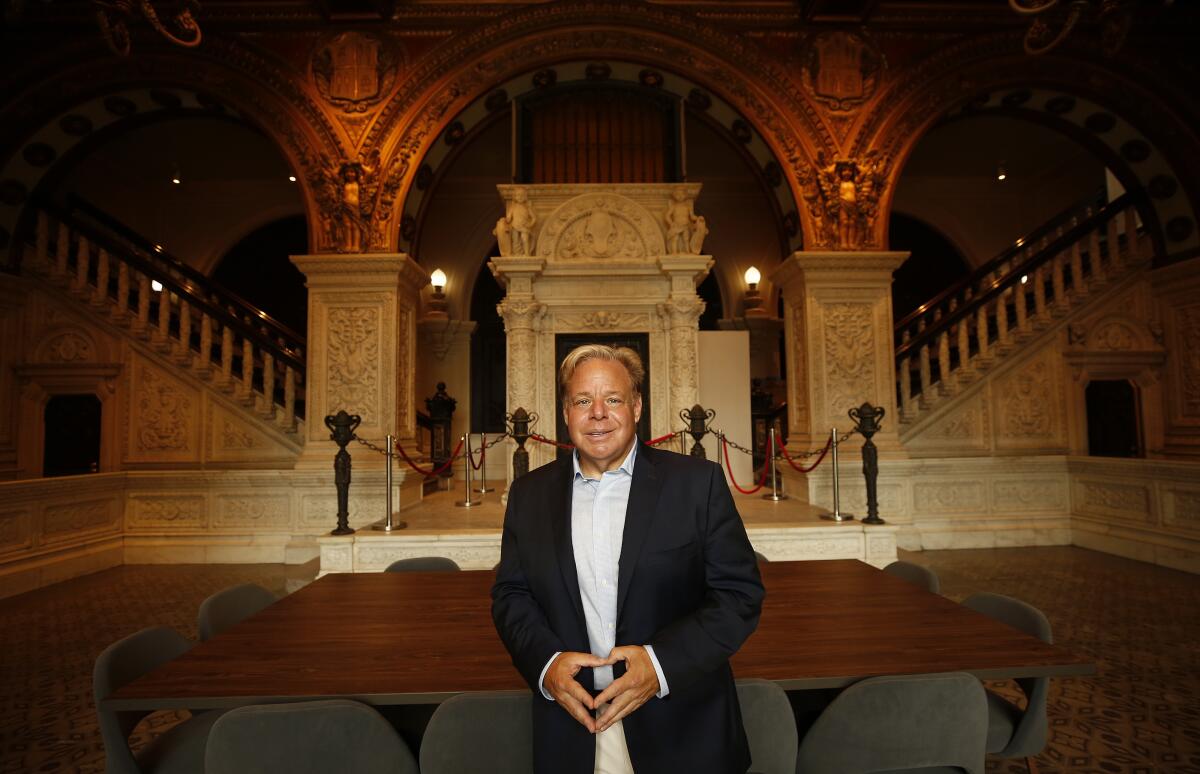
In 1913, William Randolph Hearst bought a parcel on the southern side of downtown and commissioned Morgan, California’s first registered female architect, to design a new headquarters for what was then the Los Angeles Examiner before its merger with another paper. Morgan incorporated Spanish, Italian and Moorish touches including blue-, yellow- and white-tiled cupolas that now gleam again.
Georgetown also rebuilt a more modern blade sign on the corner of the building at Broadway and 11th Street that says “Herald Examiner.”
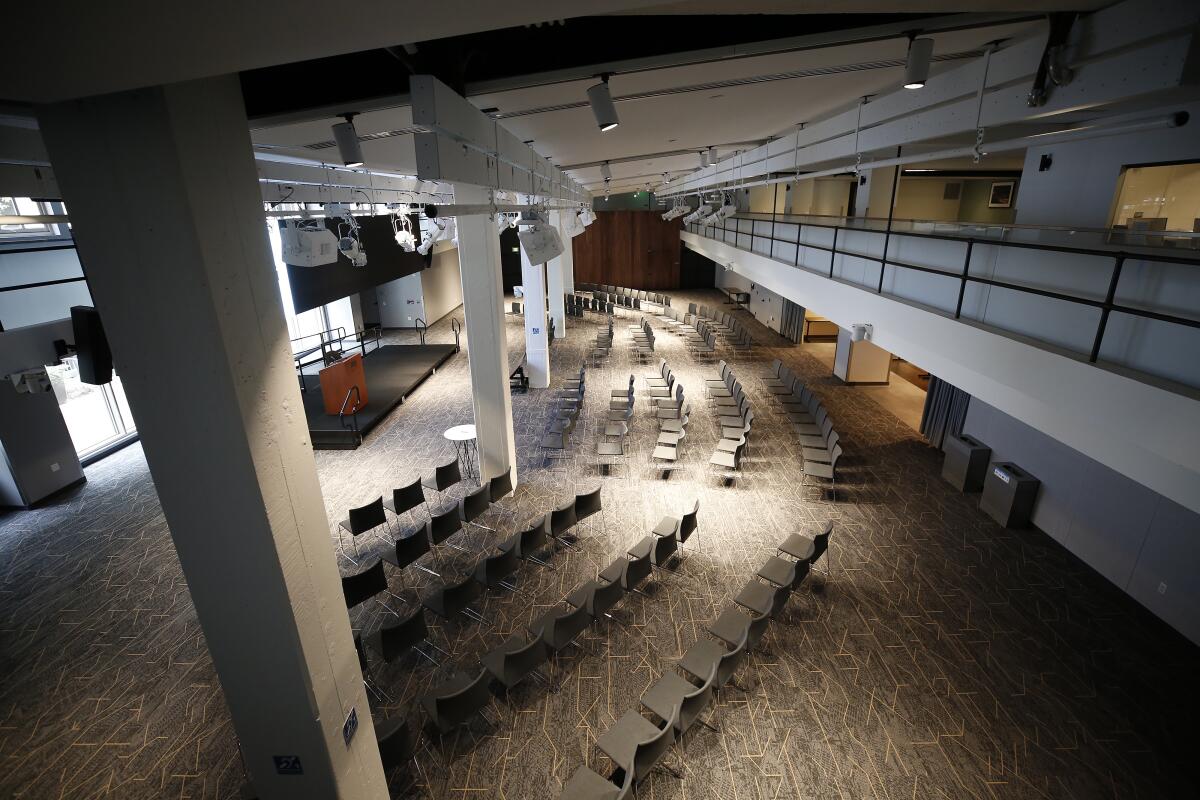
By the time the feisty and locally focused Herald Examiner closed in 1989, Broadway was no longer the shopping, entertainment and theater hub it had been for much of the 20th century. Major retailers had decamped for the suburbs, and blight had swept up and down the once-grand corridor.
The building remained vacant except for use as a filming site. At one point it was the second-most-filmed location in the Los Angeles area, according to a review of permit data.
Over the years, television shows such as “It’s Always Sunny in Philadelphia” and “Parenthood” have used the building. Movies such as “The Usual Suspects” and Arnold Schwarzenegger’s “End of Days” were filmed there.
The Los Angeles Times printing plant property will house the proposed production studios, but the newspaper will continue to print there for a time.
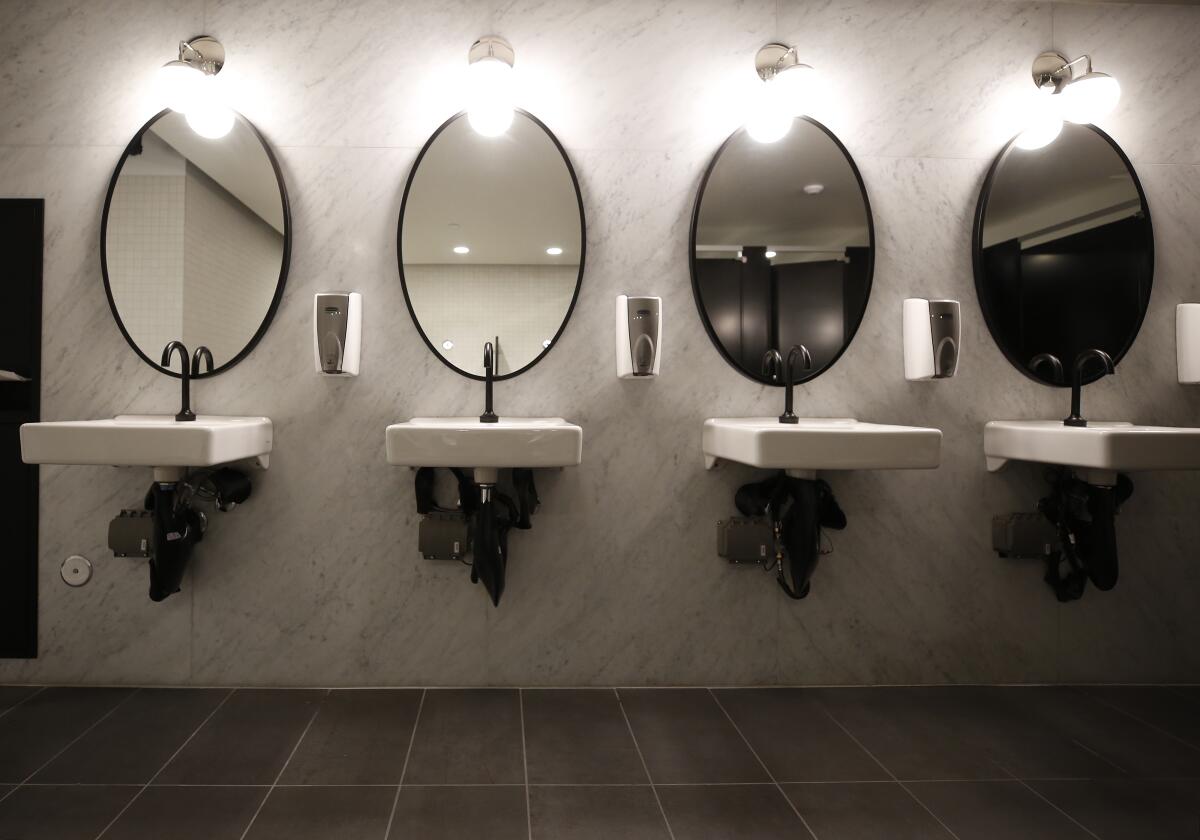
Schwarzenegger is also a part owner the building, along with Lakers star LeBron James. The men are members of Main Street Advisors, businessman Paul Wachter’s Santa Monica investment advisory firm that invested in the property with Georgetown and Hearst Corp. ASU is also part owner of the property.
The once-blighted neighborhood around the old newspaper headquarters is being transformed with apartments, hotels and offices. Not far away, the Ace Hotel and theater in a former 1920s office tower has become a thriving recreation destination since it opened in 2014.
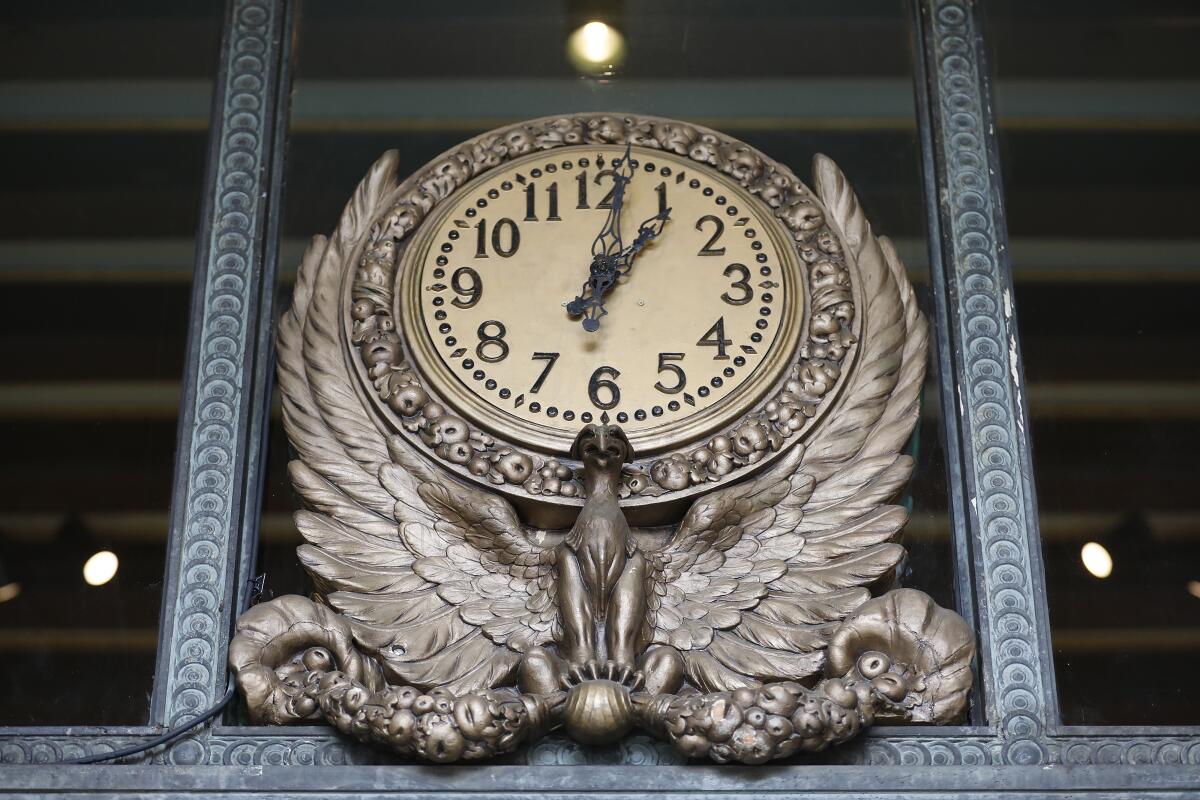
Some early plans for renovating the Herald Examiner Building called for converting it for residential use, but now it is surrounded with thousands of new apartments including a complex built on former Herald Examiner property directly behind the structure. Just to the north, a Canadian developer is offering a renovated 12-story office building completed in 1925 for lease.
Two old brick-clad office buildings nearby are being turned into hip boutique hotels, the Downtown L.A. Proper Hotel and the Hoxton. The 148-room Proper is a $50-million makeover of the former Case Hotel, a 13-story tower built in the mid-1920s. It is set to open within weeks.
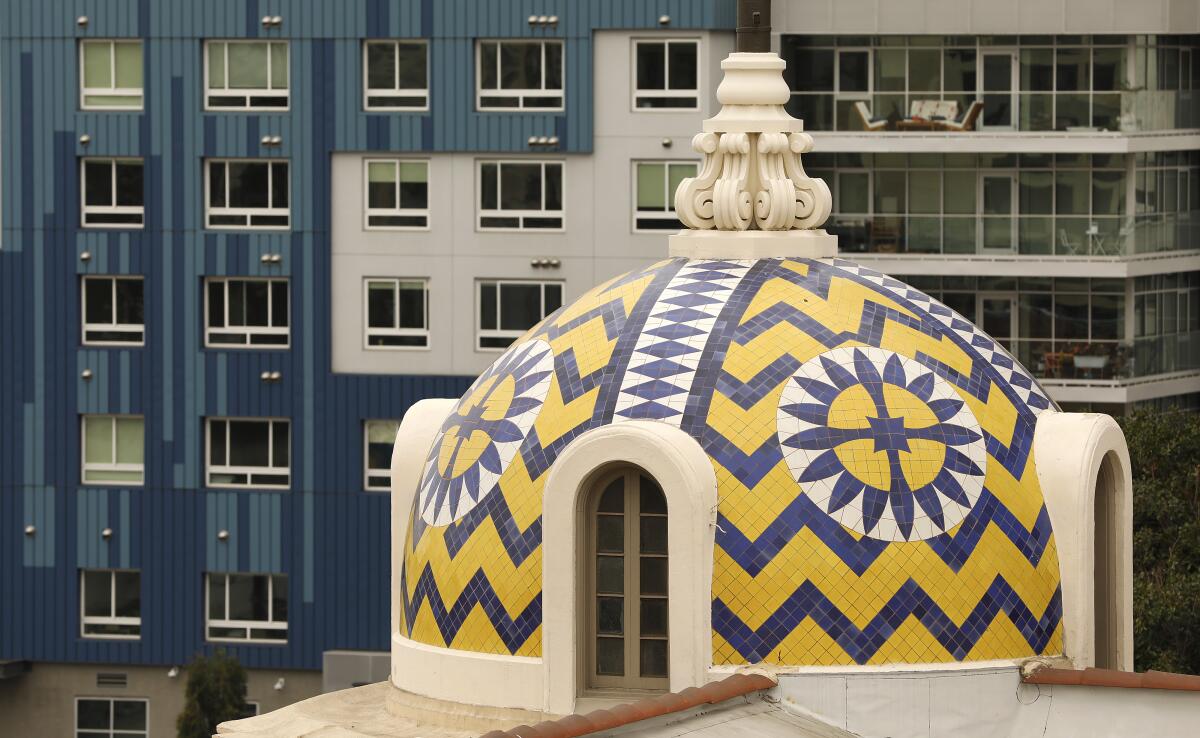
The 174-room Hoxton is already open, built in a 10-story Renaissance Revival-style former office building erected in the 1920s that was once the headquarters of the Los Angeles Railway streetcar line. It has a cafe and a rooftop restaurant and bar.
Next to come may be a 139-room boutique hotel across Broadway from the Herald Examiner Building. A Los Angeles developer has proposed to the city to build a Hyatt Centric at 1140 S. Broadway. The 15-story building would have a rooftop bar and swimming pool.
The surge of development since the Ace Hotel succeeded encouraged Hearst Corp. and Georgetown to revive the Herald Examiner Building.
“We saw a neighborhood we believed would be up and coming and also very cool,” Fischer said. “The timing was right.”
More to Read
Inside the business of entertainment
The Wide Shot brings you news, analysis and insights on everything from streaming wars to production — and what it all means for the future.
You may occasionally receive promotional content from the Los Angeles Times.
